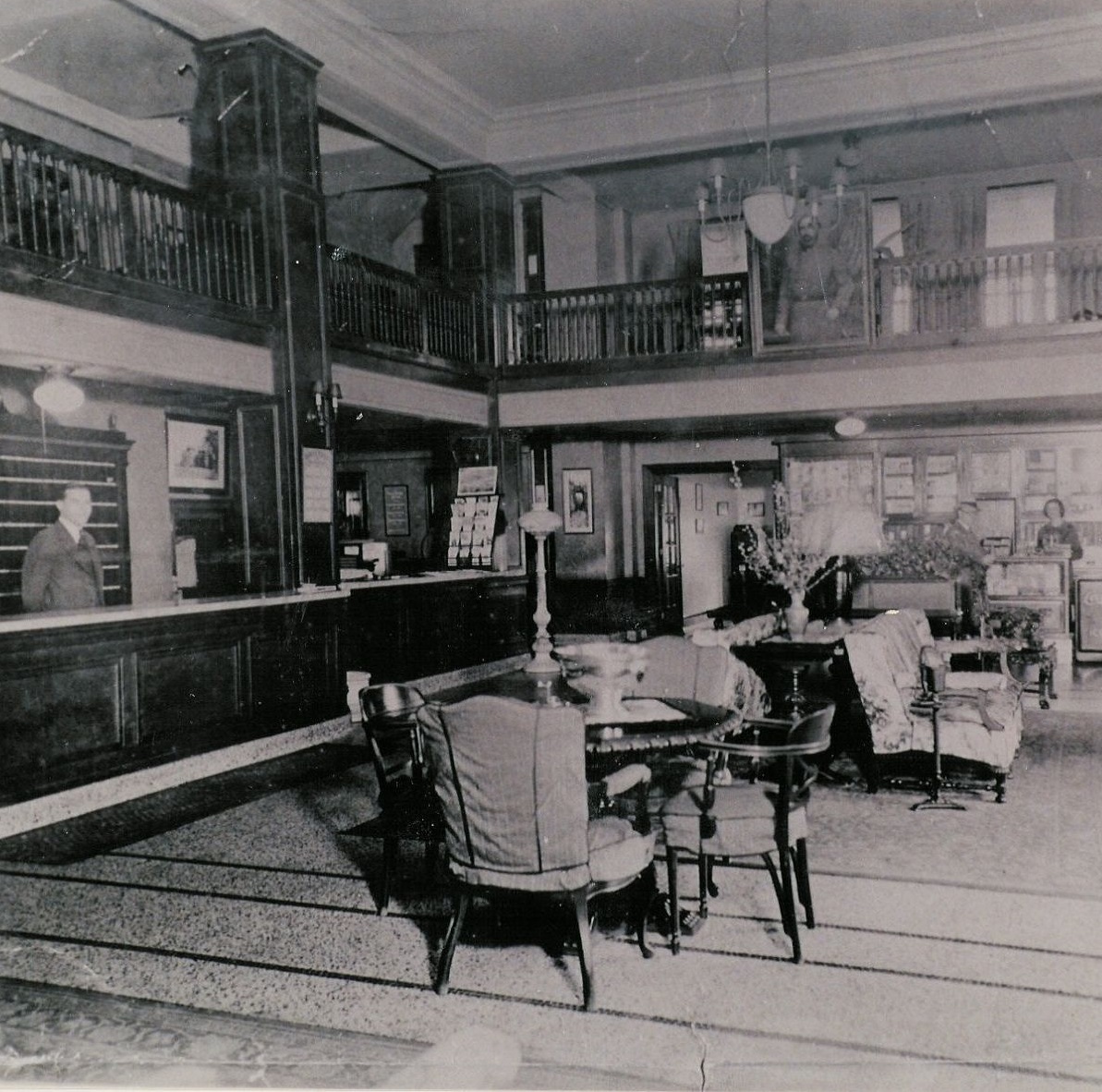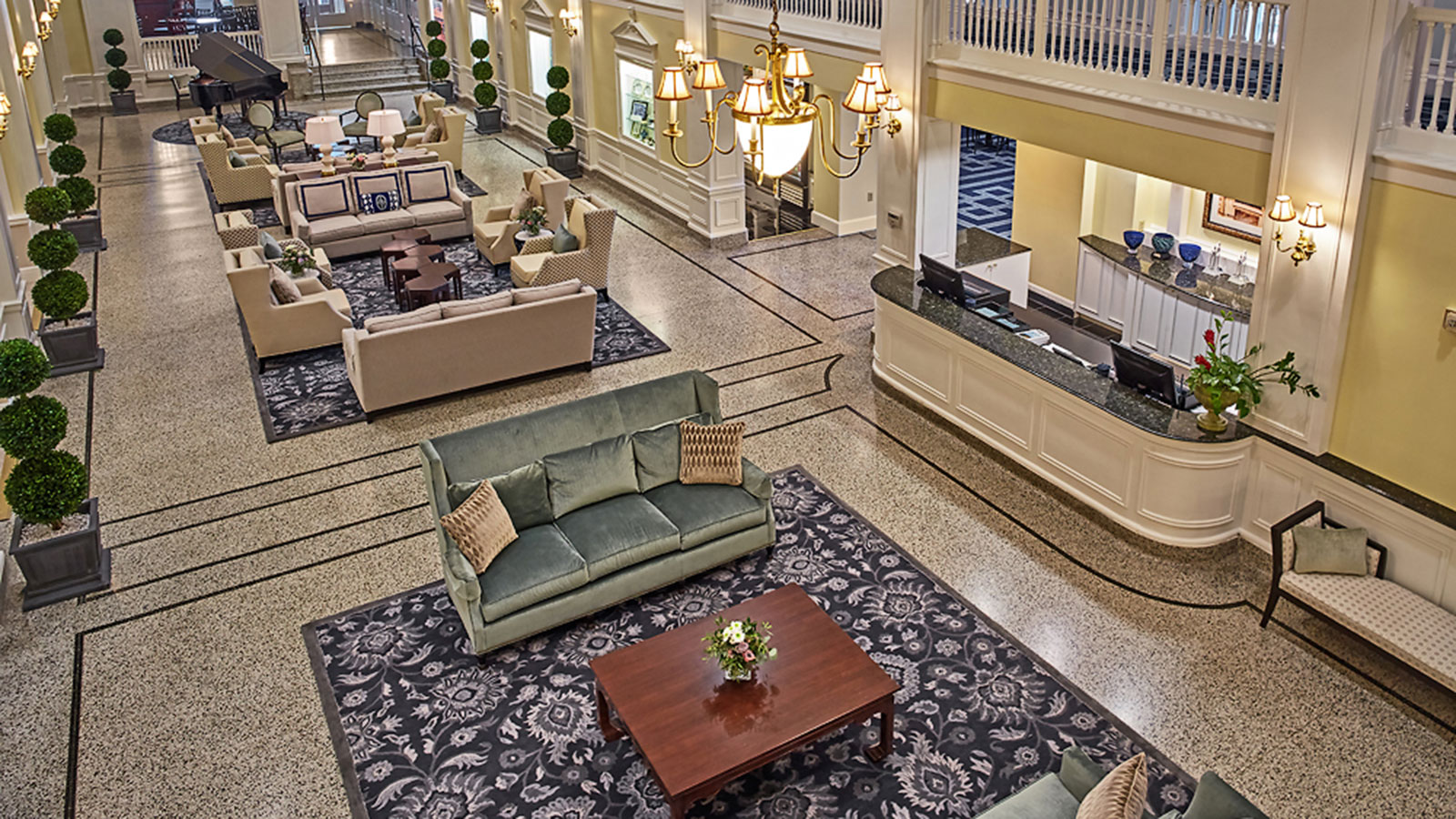Receive for Free - Discover & Explore eNewsletter monthly with advance notice of special offers, packages, and insider savings from 10% - 30% off Best Available Rates at selected hotels.
historic hotel in staunton, va
Discover Hotel 24 South whose Georgian-style, red brick structure boasts technical innovations and has served as a social hub in Staunton for many years.
Hotel 24 South, a member of Historic Hotels of America since 2006, dates back to 1924.
VIEW TIMELINEA contributing structure within the Beverly Historic District, Hotel 24 South is located in the heart of Staunton, Virginia. First settled in 1732, the city of Staunton is named for Lady Rebecca Staunton, wife of Colonial Governor William Gooch. Staunton is also resides in Virginia’s historic Shenandoah Valley, which at one point was the geographical center of the commonwealth. Given its central location and fertile setting, it quickly developed into an early center for trade and commerce. Its importance was cemented in 1854 with the arrival of the Virginia Central Railroad. Then two years later, future President Woodrow Wilson was born to a local minister and his wife. The city was largely spared from destruction during the Civil War, a significant factor in the remarkable number of historic structures that have been preserved in the downtown area. Hotel 24 South itself was constructed during the Roaring Twenties, in which flappers, the radio, and the Art Deco movement defined the age. In 1924, the elegant hotel first opened on the corner of South Market Street. The Georgian-style, red brick structure was designed by renowned architect H.L. Stevens and cost $440,000 to build. It also boasted every major technical innovation of the day, including a beautiful Wurlitzer organ. (It’s the only known organ of its kind still in operation today.) The hotel quickly became the social gathering center for the surrounding area and its large rooftop sign was a downtown landmark. Economic downturns and declining revenues forced the hotel to cease operation, although the building continued to serve the community as a center for the elderly and the homeless. A two-year, private/public partnership has brought the hotel back to life with the use of historic tax credits. A member of Historic Hotels of America since 2006, this historic hotel in Staunton Virginia is open once again for business and proudly welcomes guests to the Shenandoah Valley.
-
About the Location +
Located deep within the Shenandoah Valley, Staunton, Virginia, is a historic city with a past dating back centuries. This quaint bucolic community was specifically founded in the 1740s, although the first settlers arrived in the area a decade earlier. Interestingly, the person responsible for laying out its first street grid, Thomas Lewis, was actually the son of the very first settler, John Lewis. Various historical accounts attest that the senior Lewis was a European immigrant who had originally escaped the continent in search of religious tolerance. Finding costal Pennsylvania to be overcrowded, Lewis transported his family to the remote Virginia frontier. Dozens of other Protestant migrants settled the region over the next few years, especially once William Beverley—a wealthy English planter and local landowner—began selling parcels of land surrounding the Lewis farm. Over time, a sizeable number of the residents began forming the nucleus of a town, which Thomas Lewis took a leading role to create. Calling the town “Beverly’s Mill Place,” the residents eventually renamed it “Staunton” after the wife of Virginia’s then-Lieutenant Governor, Lady Rebecca Staunton.
Staunton grew exponentially over the following decades, emerging as arguably the most important community in colonial western Virginia. In fact, the town’s status made the royal government establish it as both the capital for Augusta County, as well as for the entire western frontier. Some of Virginia’s patriot leadership—including Thomas Jefferson—even briefly met in Staunton during the American Revolution after they were chased out of both Richmond and Charlottesville. (Jefferson also spent time in Staunton practicing as a lawyer throughout the 1760s and 1770s.) Driving Staunton’s social and political changes was its proximity to several main thoroughfares, specifically the historic “Great Wagon Road.” Later renamed as the “Valley Pike,” it connected the Virginian “backcountry” with its wealthy Tidewater region. Many settlers from all across the Atlantic world pushed further inland from Staunton along this route, a practice that remained strong well into the 19th century. Among the people to settle in Staunton at the time included the parents of future U.S. President Woodrow Wilson, who arrived in the city as Presbyterian missionaries.
The town also evolved rapidly into a regional economic center, due to the many transient merchants who transported large amounts of grain and tobacco through Staunton. This prosperity continued for generations, particularly after the Virginia Central Railroad began supplementing commercial traffic into Staunton alongside the Valley Pike during the 1850s. The combination of the railroads and improved roadways made it possible for local businesspeople to ferry their goods to markets farther away, sparking a minor wave of industrial construction that lasted for decades. Several factories subsequently opened as such, creating a variety of products that ranged from textiles to wagons parts. But Staunton’s economic affluence eventually made it an important military target once the American Civil War sundered the nation. While Staunton saw little action amid the first few years of the war, it increasingly became a focal point for Union and Confederate armies toward the latter half of the conflict. The climax of the Civil War for Staunton came in June of 1864, when Union General David Hunter occupied the city with 10,000 soldiers following the Battle of Piedmont. Only staying for two days, General Hunter’s army destroyed the local railroad station, as well as numerous warehouses, factories, and mills.
Staunton has since remained one of the Shenandoah Valley’s most celebrated communities, fueled by a thriving cultural heritage tourism industry. The community itself is home to a number of fascinating attractions, including The Camera Heritage Museum, the Frontier Culture Museum, Mary Baldwin University, and the Wharf Area Historic District. Perhaps the greatest destination within the city limits is the Woodrow Wilson Presidential Library, which is housed within the former president’s childhood home. Additional presidential sites are located just a few miles outside Staunton, too, including Thomas Jefferson’s Monticello and James Madison’s Montpelier. Furthermore, travelers interested in Virginia’s rich Civil War heritage will find Staunton an attractive place to visit, for it is close to the Shenandoah Valley Battlefields National Historic District. Other nearby destinations include the greater Shenandoah Valley National Park, the Luray Caverns, and the Cyrus McCormick Farm. Come experience a true cultural experience by visiting historic Staunton today!
-
About the Architecture +
Hotel 24 South itself stands as a brilliant example of Georgian Revival-style architecture. Georgian Revival-style architecture itself is a subset of a much more prominent architectural form known as “Colonial Revival.” Colonial Revival architecture today is perhaps the most widely used building form in the entire United States. It reached its zenith at the height of the Gilded Age, where countless Americans turned to the aesthetic to celebrate what they feared was America’s disappearing past. The movement came about in the aftermath of the Centennial International Exhibition of 1876, in which people from across the country traveled to Philadelphia, Pennsylvania, to commemorate the American Revolution. Many of the exhibitors chose to display cultural representations of 18th-century America, encouraging millions of people across the country to preserve the nation’s history. Architects were among those inspired, who looked to revitalize the design principles of colonial English and Dutch homes. This gradually gave way to a larger embrace of Georgian and Federal-style architecture, which focused exclusively on the country’s formative years. As such, structures built in the style of Colonial Revival architecture—as well as the Georgian Revival-style—featured such components as pilasters, brickwork, and modest, double-hung windows. Symmetrical designs defined their façades, anchored by a central, pedimented front door and simplistic portico. Gable roofs typically topped the buildings, although hipped and gambrel forms were used, too. This building form remained immensely popular for years until largely petering out in late 20th century.


































